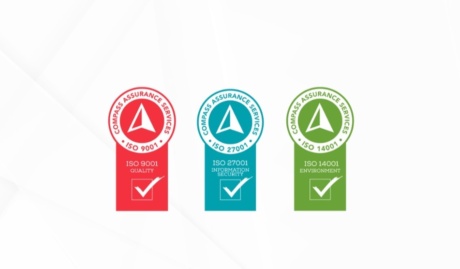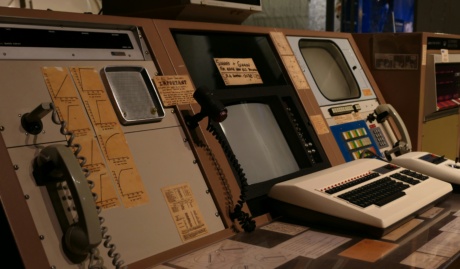In this article we will discuss:
- What are Managed IT Services
- What is Managed IT Support
- What are the benefits of Managed IT Services
- Understanding Managed IT Services pricing
- Common models of Managed IT Support
- Managed IT Support pricing models
- Common factors that influence pricing
- Common inclusions & exclusions
- Other things to consider
What are Managed IT Services?
If you’re considering engaging a Managed Service Provider (MSP) to provide Managed IT Support, it’s important that you understand what factors can influence how much you will pay. You may be looking to change from an existing MSP, upgrade from ad-hoc support, or perhaps compliment in-house IT staff; in any case it’s important that you understand the factors that can influence Managed IT Services pricing, and what the price is likely to look like.
Managed IT Services are IT services provided and managed for your business by a third-party provider known as a Managed Service Provider (MSP). They are an effective way of providing your business with the information technology services and resources that it needs to prosper, without having to invest in building your own in-house capabilities in these areas. With the burden of providing and managing your IT services contracted to a third party, you can stay focused on your own core areas of expertise.
There are many services that can be delivered as a Managed IT Service, such as IT Support, Helpdesk, Internet connectivity, Infrastructure Management and Application Maintenance.
What is Managed IT Support?
Managed IT Support is the provision of IT Support & related services such as Helpdesk by a Managed Service Provider, usually charged at a fixed monthly cost for an agreed scope of service. Managed IT Support is the preferred choice for small & medium businesses in Australia when compared with other options such as ad-hoc break fix support or hiring an in-house IT support team.
Managed IT Support is often thought of primarily as user facing Helpdesk support. Although this is a significant part of any engagement, most Managed IT Support contracts will also provide for proactive management of IT platforms and infrastructure. Every MSP’s contract will be different, which is why it’s important that you properly understand the inclusions and exclusions when considering a new engagement.
The benefits of Managed IT Services
Managed IT Services have many advantages over the alternative options.
- The MSP’s interests are aligned with yours. The better managed & maintained your IT systems are, the fewer issues you will experience and the less you will need to call on helpdesk support.
- Promotes a partnership approach, allowing for a better understanding of each business and a more productive working relationship.
- Access to a full team of IT experts with a range of skills, knowledge and experience.
- Removes the risk of a single point of failure, such as a single in-house IT resource or a small ad-hoc provider.
- Proactive monitoring of systems and resolution of emerging issues, rather than waiting for un-seen issues to become disruptive problems.
How much does Managed IT Support cost?
Every business has its own unique requirements, and every contract may have different inclusions, however in general there are commonly accepted methods for pricing a Managed IT Support contract which take into consideration factors such as the size and complexity of your IT environment, and the scope of services included.
As a rule of thumb, a Managed IT Support contract in Brisbane will cost between $100 and $150 per computer (or user) per month.
Prices in other parts of Australia may vary but in general this price range is a good indication of what you can expect to pay across most of Australia.
Common models of Managed IT Support
One factor that can influence Managed IT Services pricing is the support model that your organisation has chosen. The three most common support models are:
Fully Managed
For many small to medium-sized businesses it can make sense to fully outsource the provision of IT support to a Managed Services Provider. This will entail the MSP providing not only user-facing Helpdesk support, but also monitoring and management of infrastructure and platforms such as Microsoft 365.
Co-managed
For businesses that already have an in-house IT team, Managed IT Support can complement these staff by either providing escalation support for more complex issues, or by relieving some of the load by handling more routine or lower-level duties.
Platform management
For those businesses happy to handle their own user-facing helpdesk support, Managed IT Support can help by monitoring and managing all infrastructure and platforms and remediating any issues that may arise.
Managed IT Services pricing models
There are three common pricing models used when pricing IT support contracts which may either be used to price the entirety of the contract or used in combination to reach a final price.
Per Device
Per device pricing uses a certain price for each device of a particular type. For example, you may have 20 computers in your business and be offered a price of $100 per computer per month. Of course, it’s important to be clear on what is included in this price. Does this price include Helpdesk support for your users? Does it include management of any infrastructure such as firewalls and switches?
Per User
Per user pricing is similar to per device pricing, but rather than identifying individual devices it counts how many users are in your business.
Flat Fee
The flat fee pricing model doesn’t specifically offer a rate per device or computer, but instead offers a single flat fee, irrespective of the user or device count in the business.
Irrespective of which pricing model is used, it’s worth noting that the intention is to determine a price that will provide the client with fair value for money while allowing the MSP to make a sustainable profit. In recognition that business circumstances change over time, most contracts will allow for periodic adjustments to ensure that the agreement continues to provide value for both parties over the long term.
Common factors in Managed IT Services pricing
The final cost of Managed IT support for your business will vary depending on the needs of your business and the Managed Service Provider that you choose to engage. Here are several of the most common factors that can influence the overall cost of a Managed IT Support agreement:
- The number of users
- The number of computers
- The number and type of other devices such as firewalls and printers
- Any unique or specific apps to be supported
- The complexity of your IT systems
- The age & health of your IT systems
- The number of separate office locations
- The number of remote or field workers vs office workers
- Any existing in-house IT staff
- Specific requirements for response times, such as 24×7 helpdesk
- Inclusions and exclusions such as onsite support and security management
Common inclusions
Each MSP will include different services in their contracts. Some MSP’s will have tightly defined service offerings with different inclusions that you can choose from, often following the classic Good – Better – Best model, with names like Bronze, Silver and Gold. Other MSP’s may offer a more bespoke pricing model, with inclusions and pricing specific to each client’s needs.
Whatever the pricing model, most Managed IT Support contracts have common inclusions such as:
- Remote helpdesk support
- Infrastructure & platform management
- Cybersecurity software and management
Although less common, some MSP’s may choose to bundle additional items into their main list of inclusions. For example, we have seen some MSP’s bundling Office 365 licenses, and even new laptops into their core Managed IT Support contracts, rather than leaving them as optional extras.
When assessing the price of Managed IT Support it’s important to be clear on what is included in the monthly fixed fee, and what is not. For those items not included, it’s also important to be clear on what rates would apply.
Common exclusions
There will also usually be items excluded from the agreement, but available at extra cost, such as:
- IT strategy development & implementation
- Projects & major changes
- Products such as computers and software licensing
- Onsite support
- After hours support
- Remediation of malicious action
- Security audit, monitoring & response
- Training
Other things to consider
Price is a key factor when considering Managed IT Support, however there are other crucial factors to understand when deciding whether Managed IT Support is right for you, and if so, which Managed Service Provider you will partner with.
- What is your risk profile? Partnering with a proven Managed Service Provider is an effective way to reduce your exposure to IT risks such as poorly maintained systems and key-man risk.
- Is there values alignment? The most productive engagements are long term partnerships which rely on mutual respect & shared values.
- Does the MSP have a proven track record of working with organisations like yours?
- Does the MSP have experience supporting the technologies that you use?
- Does the MSP have a proven process for supporting you not just today, but helping you to evolve and develop your IT into the future?
Next steps
Technology is a critical piece of every business but can be confusing and difficult to get right. Partnering with a proven Managed Service Provider will give you the peace of mind to focus on growing your business. Contact us today for a free consultation on how Grassroots IT can help.


























